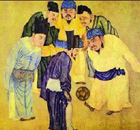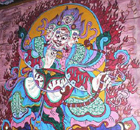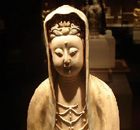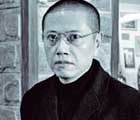Heritage
Qingyang Tune Opera
(chinaculture.org)
Updated: 2008-12-11 16:30
 |
Large Medium Small |
Year: 2006
Sort: Traditional Operas
Area: Anhui and Jiangxi provinces
Serial No.: Ⅳ-6
Declarer: Qingyang county, Anhui province; Hukou county, Jiangxi province
The Qingyang Tune Opera, formed in Chizhou City of Anhui province in southeastern China during the Ming Dynasty (1368-1644AD), is also called the Chizhou Tune Opera. Qingyang Opera adds colloquial verses or short sentences that are easy to recite throughout the Chuanqi Opera, a form of drama in the Ming-Qing period that is immensely long with an average of forty or more scenes.
A large number of repertoires of the Qingyang Opera have derived their subjects from the Southern opera, one of the earliest operas formed in Southern Song Dynasty (1127-1279AD). The singing is accompanied by drums, cymbals, gongs and other musical instruments. There are seven roles in all, including sheng (male role), dan (female role), jing (painted-face male role), mo (the first supporting role) and chou (clown or comic role). The solos are orchestrated with a chorus. The arias are flexible and the lines are easy and plain. The actors wear various paper masks and perform acrobatics on the stage like jumping through burning rings, making the opera more exciting.
The Qingyang Tune Opera has spread to many places including Fujian, Hunan, Sichuan and Shandong provinces, directly or indirectly affecting the formation and development of operas in these places, such as Chuan Opera and Huangmei Opera. However, due to war, plague and external cultural influences, the Qingyang Tune Opera is slowly disappearing. Protective measures should be taken as soon as possible to keep it alive.










